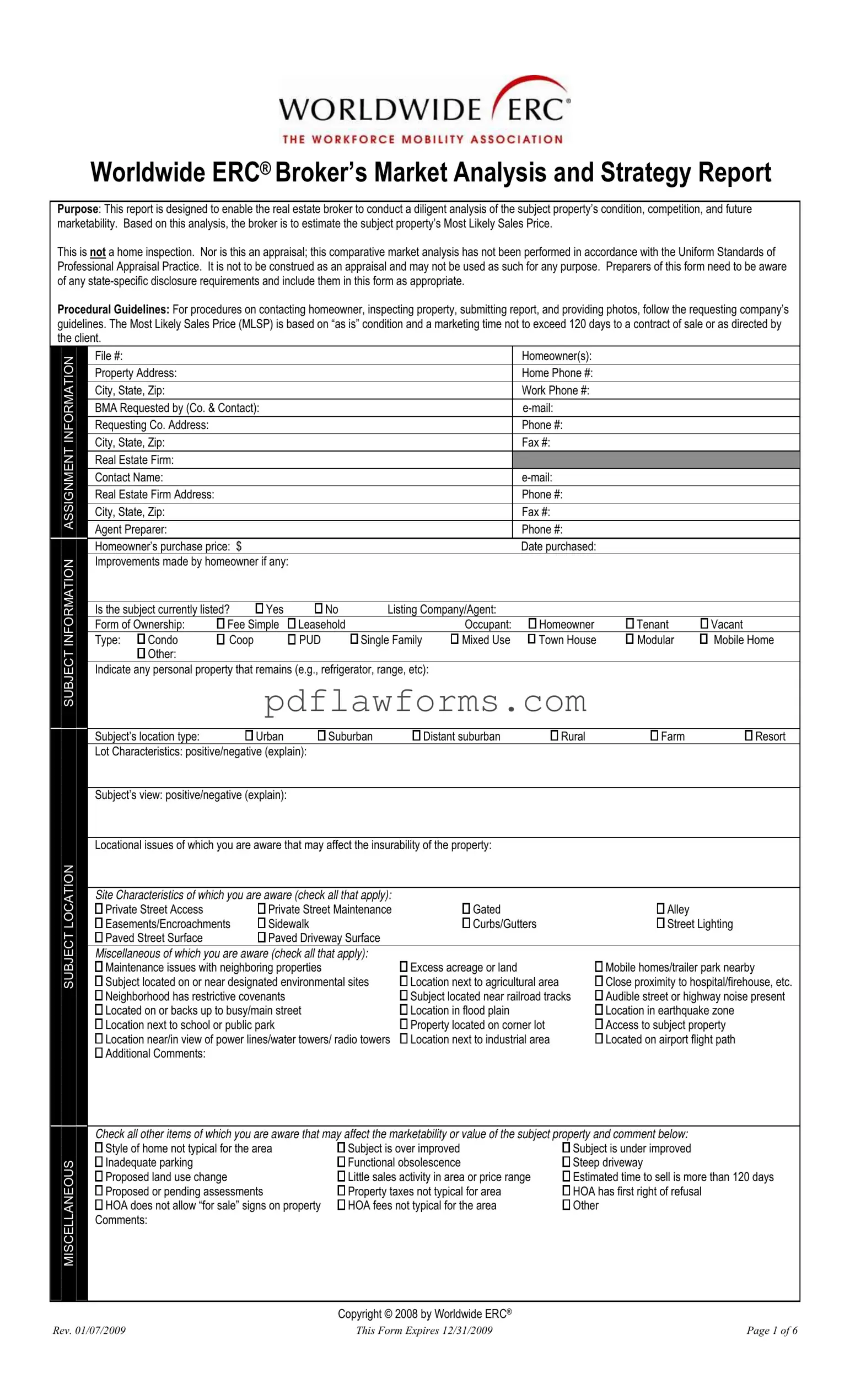Misconception 1: The ERC Broker Market Analysis form is the same as a home inspection.
This form is not a home inspection. It is designed to provide a comparative market analysis, focusing on the property’s condition and marketability rather than conducting a thorough inspection of the home’s structural integrity.
Misconception 2: This form serves as an official appraisal.
While it provides valuable insights, it is not an appraisal and should not be used as such. The analysis does not follow the Uniform Standards of Professional Appraisal Practice, which is essential for formal appraisals.
Misconception 3: The Most Likely Sales Price (MLSP) is guaranteed.
The MLSP is an estimate based on current market conditions and property analysis. It is not a fixed price and can vary based on numerous factors, including market fluctuations and buyer interest.
Misconception 4: The form does not require any local disclosure considerations.
Preparers must be aware of state-specific disclosure requirements. Including these details is crucial for compliance and ensuring that all relevant information is disclosed.
Misconception 5: The ERC form can be filled out without any prior knowledge of the property.
Thorough knowledge of the property and its surroundings is essential. The form requires detailed information about the property’s condition, improvements, and neighborhood dynamics.
Misconception 6: The analysis can be completed without inspecting the property.
While the form can be filled out based on available data, conducting an on-site inspection allows for a more accurate and informed analysis. Observations made during the inspection can significantly influence the final report.
Misconception 7: The form is only useful for residential properties.
This analysis can apply to various property types, including condos, townhouses, and mixed-use developments. The adaptability of the form makes it a valuable tool across different real estate markets.
Misconception 8: The ERC Broker Market Analysis form is a one-time use document.
This form can be updated and reused as market conditions change or as new information about the property becomes available. Regular updates ensure that the analysis remains relevant and accurate.
